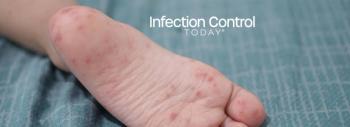
- Infection Control Today, May/June 2025 (Vol. 29 No.3)
- Volume 29
- Issue 3
The Clean Bite: Think Twice Before Closing Your Lips Around That Little Suction Thing
It’s a familiar request at the dentist—“close your lips around the suction.” But that small act could expose you to backflow contamination from previous patients. This first article in a brand new column by Sherrie Busby, EDDA, CDSO, CDIPC, explores the unseen risks of dental suction devices—and why patients should pause before obeying.
How often has your dental hygienist asked you to “close your lips around the suction”?
You know the one—it’s that small plastic tube that whisks away saliva and water while you are in the chair. Like millions of others, you probably followed directions without a second thought, leaving the appointment feeling like the world’s most cooperative patient.
But here is something most people don’t realize: That little suction device (technically, a saliva ejector) has the potential to do more than keep your mouth dry. Under certain conditions, it can cause backflow, pulling not only your saliva but also residue from previous patients right back into your mouth.1
Are you grossed out yet? You are not alone.
What Is Backflow and Why Does It Matter?
Suctioning is also called pipetting. Unfortunately, your hygienist may or may not have learned about it in hygiene school, and over time, it can easily become an overlooked habit.
The risk? You can be exposed to bacteria, viruses, and other contaminants lingering in those small suction lines.
Here’s where safety regulations come in.
The Occupational Safety and Health Administration’s (OSHA) Bloodborne Pathogens Standard,2 Association for Dental Safety,3 and the CDC4 govern the dental field to protect both patients and professionals. Here is a key excerpt:
OSHA Regulation 1910.1030(d)(2)(xii)
“Mouth pipetting/suctioning of blood or other potentially infectious materials is prohibited.”2
In addition, Association for Dental Safety3 and CDC4 guidance “urge[s] dental practitioners to not allow the patient to close around the saliva ejector despite how learned the behavior is: “Do not advise patients to close their lips tightly around the saliva ejector, as this may cause backflow of oral fluids.3”
In simpler terms: Allowing saliva or potentially infectious materials to be suctioned back into your mouth is a no-go. It increases the risk of exposure to harmful pathogens, which no one wants during a dental visit.
What’s Hiding in the Suction Lines?
Concern increases when you understand what is inside those tubes. Dental offices use small suction and water lines regularly, and over time, these accumulate biofilm—a sticky layer of bacteria.1,3
Another culprit found in hygiene rooms is prophylaxis paste. This gritty, sandlike substance is used to polish teeth and make them feel smooth. However, it can trap bacteria, viruses, and even microscopic traces of blood or saliva from previous patients in the suction lines.4
So, when you tightly seal your lips around the saliva ejector, you might unintentionally draw back a cocktail of unpleasant materials.
What Can You Do?
Don’t hesitate to ask questions at your next dental appointment. Inquire about the suction system they use and how it prevents backflow. Some modern systems have antibackflow valves designed to reduce this risk, but it is always good to double check.1,2
Remember: A small action like asking about—and reminding your dental team of the importance of—following best practices could help protect your health.
Final Thoughts
You have every right to expect a clean, safe dental visit. So next time you are in the chair, think twice before sealing your lips around that suction device—it might be your healthiest move all day.
References
1. Watson CM, Whitehouse RL. Possibility of cross-contamination between dental patients by means of the saliva ejector. J Am Dent Assoc. 1993 Apr;124(4):77-80. doi:10.14219/jada.archive.1993.0080. PMID: 8340550.
2. Bloodborne pathogens standard, 29 CFR 1910.1030. Occupational Safety and Health Administration. Accessed March 21, 2025.
3. Suction backflow—how dental hygienists can prevent cross-contamination. Michigan Dental Association. Accessed April 15, 2025.
4. Guidelines for infection control in dental health-care settings—2003. MMWR Recomm Rep. 2003;52(RR-17):1-61. Accessed April 15, 2025.
Articles in this issue
Newsletter
Stay prepared and protected with Infection Control Today's newsletter, delivering essential updates, best practices, and expert insights for infection preventionists.






